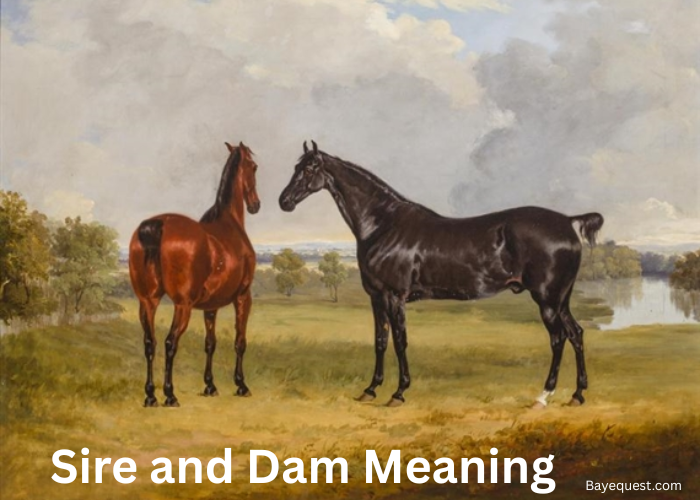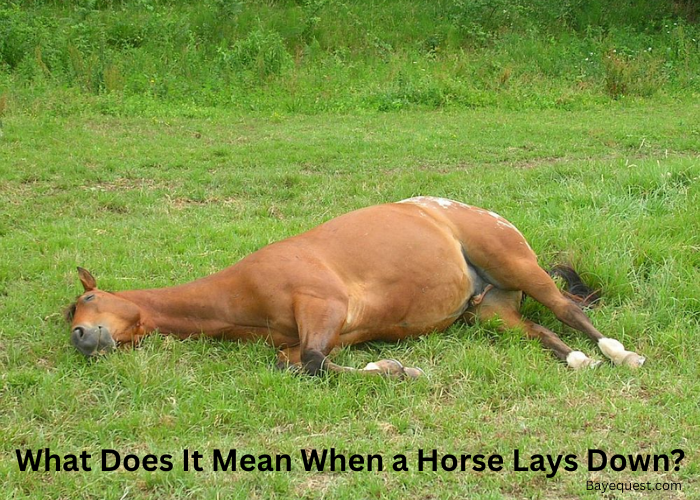A runny nose in a horse may seem harmless, but it can signal various health issues.
From minor dust irritation to serious respiratory infections, that nasal drip can reveal a lot.
Knowing the difference between a harmless sniffle and a concerning symptom helps you take quick action.
In this guide, we’ll explore what causes a horse’s nose to run, what symptoms to watch for, and how to handle different types of nasal discharge.
Keeping your horse healthy starts with knowing when a runny nose is more than just a nuisance.
Horse Runny Nose: Key Takeaway
A horse’s runny nose is nasal discharge that can range from clear to thick and colored. It may be caused by irritants, infections, or allergies. Clear mucus is usually harmless, while thick or colored discharge might signal infection.
What is a Runny Nose in Horses?
A runny nose in horses, also known as nasal discharge, is when fluid flows from the horse’s nostrils.
This discharge can vary in color and consistency—from clear to cloudy or even thick, and in some cases, it may be yellow or green.
Each type of discharge tells us something different about the horse’s health.
Clear discharge might be a reaction to dust or mild irritation, while yellow or green mucus often signals an infection or respiratory issue.
Observing the type and amount of discharge can help determine if it’s a minor issue or something that needs a vet’s attention.
Causes of Horse Nasal Discharge
Understanding what causes nasal discharge in horses is essential for maintaining their health.
Here’s a closer look at the common causes behind horse nasal discharge.
1. Environmental factors
Environmental irritants like dust, pollen, or strong ammonia can cause nasal discharge in horses.
Poorly ventilated stables, especially with straw or shavings that produce fine dust particles, can also irritate a horse’s nasal passages.
When inhaled, these particles stimulate mucus production to protect the respiratory tract.
Horses with sensitive airways may react strongly to these irritants, resulting in clear or slightly cloudy nasal discharge.
2. Respiratory infections
Respiratory infections in horses, often caused by viruses like equine influenza or bacteria such as Streptococcus, may lead to nasal discharge.
These pathogens invade the respiratory tract, inflaming tissues and increasing mucus production.
Viral infections cause clear to whitish discharge, while bacterial infections may lead to thicker, yellow or green mucus.
Additional symptoms like fever, coughing, and reduced appetite often accompany respiratory infections.
3. Equine asthma or allergies
Equine asthma, also known as recurrent airway obstruction, and allergies can cause chronic nasal discharge.
Inhaling allergens like mold, dust, or pollen can irritate the horse’s airways, triggering mucus production.
This condition, much like asthma in humans, inflames the airways, making it difficult for the horse to breathe well.
Horses with asthma often exhibit clear or cloudy discharge, along with coughing and labored breathing.
4. Dental issues
When tooth infections spread to the sinus cavities, horses become susceptible to nasal discharges.
Infected teeth release bacteria into the surrounding tissues, which can reach the sinuses, causing inflammation and pus buildup.
This discharge is usually thick and foul-smelling, often appearing from one nostril only.
5. Ethmoid hematoma
An ethmoid hematoma is a non-cancerous mass that develops in the ethmoid region of a horse’s nasal passage.
This mass can grow over time, causing persistent, often bloody nasal discharge.
The discharge appears on one side, and as the hematoma enlarges, it may lead to difficulty breathing or snoring sounds.
6. Guttural pouch empyema
Guttural pouch empyema is a bacterial infection that affects the guttural pouches. This condition occurs when bacteria, such as Streptococcus, enter the pouches and cause a buildup of pus.
The resulting nasal discharge is usually thick, yellow, and foul-smelling.
Horses with guttural pouch empyema may also have swollen lymph nodes, difficulty swallowing, or a high fever.
7. Strangles
Strangles is a contagious bacterial infection caused by Streptococcus equi. It affects the lymph nodes and upper respiratory tract.
It leads to thick, yellow or green nasal discharge, often accompanied by swollen lymph nodes under the jaw.
In severe cases, abscesses form and drain, releasing pus, accompanied by fever, loss of appetite, and difficulty swallowing.
8. Esophageal obstruction (Choke)
Choke in horses is when food becomes lodged in the esophagus, causing nasal discharge.
Unlike humans, horses cannot vomit, so when food gets stuck, saliva and food particles back up and exit through the nostrils.
This discharge is usually frothy and may contain food bits.
9. Head injury
Head trauma in horses can cause nasal discharge if the injury affects the sinuses or nasal passages.
Fractures or damage to these areas may lead to bleeding or leakage of cerebrospinal fluid, which can exit through the nostrils.
Discharge from head injuries is often bloody or clear and may appear from one or both nostrils, depending on the injury’s location.
10. Exercise-induced pulmonary hemorrhage (EIPH)
EIPH, also known as “bleeding,” occurs in horses after intense exercise when blood vessels in the lungs rupture.
This condition causes small amounts of blood to enter the airways and sometimes exit through the nostrils.
Horses prone to EIPH may show nasal discharge with traces of blood following strenuous activities, such as racing.
Read also: How Large are Horse Lungs?
What Nasal Discharges Mean in Horses
Each type of discharge tells a different story about a horse’s health. Here’s a breakdown of what different types of nasal discharge might mean:
Clear discharge
Usually harmless, clear nasal discharge often indicates a mild irritation or exposure to dust or allergens. It may also occur after exercise due to moisture buildup in the respiratory tract.
White or cloudy discharge
This can signal a mild respiratory infection or early-stage inflammation. If it persists, it may indicate a need for further examination.
Yellow or green discharge
Thick, colored discharge often suggests a bacterial infection, such as sinusitis or a respiratory infection. It’s usually a sign that a vet should be involved.
Bloody discharge
Blood from the nostrils may indicate trauma, such as a head injury, or specific conditions like an ethmoid hematoma.
Blood after exercise could mean exercise-induced pulmonary hemorrhage, common in racehorses.
Frothy or food-like discharge
If discharge contains bits of food or appears frothy, it could be a sign of choke, where food is stuck in the esophagus and exits through the nostrils.
Smell
A foul smell from nasal discharge often signals a bacterial infection, as bacteria produce odors when breaking down tissues.
Conditions like dental infections or sinusitis commonly cause this. A strong odor indicates an issue needing prompt treatment.
Foamy or chunky discharge
Foamy discharge often appears when mucus mixes with air, hinting at respiratory distress or infection.
Chunky discharge, containing particles, usually indicates a blockage or infection, such as sinusitis or choke.
One nostril or both
Discharge from one nostril suggests a localized issue, like a dental infection or foreign body, limited to one side of the head.
Both nostrils indicate a more widespread respiratory condition.
Viral or bacterial
Viral infections cause clear, thin discharge that may become cloudy as the body fights the virus.
Bacterial infections, however, often lead to thicker, yellow or green discharge, sometimes with a foul odor.
Symptoms Accompanying a Runny Nose in Horses
When a horse has a runny nose, other symptoms often accompany it, providing clues to the underlying cause. Here’s what to watch for:
Coughing
Persistent coughing can indicate respiratory infections, allergies, or irritation in the airways. Coupled with nasal discharge, it might suggest conditions like equine asthma or infection.
Fever
A raised temperature, along with nasal discharge, often points to an infection. Fever is the body’s response to fighting off bacteria or viruses.
Swollen lymph nodes
Swelling under the jaw or throat area can indicate infections like strangles or other upper respiratory issues.
Lethargy
A horse that seems unusually tired or disinterested in activity may be experiencing discomfort from an infection or other health issue.
Appetite loss
Difficulty eating, paired with nasal discharge, can signal dental problems, respiratory distress, or other conditions.
Labored breathing
If the horse struggles to breathe comfortably or shows signs of labored breathing, it may indicate respiratory issues, such as equine asthma or an infection that has spread to the lower airways.
How to Diagnose Horse Nasal Discharge
Diagnosing the cause of nasal discharge in horses involves a thorough examination and may require several diagnostic tests.
Here’s how veterinarians approach this process:
Physical examination
A vet will start by observing the horse’s general health and checking vital signs like temperature, respiratory rate, and heart rate.
They’ll look for other symptoms, such as swollen lymph nodes, coughing, or labored breathing.
The type, color, and consistency of nasal discharge are noted, as well as whether it’s coming from one or both nostrils.
Endoscopy
An endoscope is inserted into the horse’s nasal passages to examine the airways and detect any abnormalities, such as foreign objects, inflammation, or masses like an ethmoid hematoma.
This tool helps veterinarians get a clear view of the respiratory tract without invasive surgery.
Nasal swabs and cultures
To identify bacterial or viral infections, the vet may take swabs of the nasal discharge.
These samples are sent to a lab, where they are cultured to reveal specific pathogens.
Identifying the organism helps determine the most effective treatment, especially if antibiotics or antiviral drugs are needed.
Radiographs (X-rays) or ultrasound
Imaging techniques like X-rays or ultrasound are used to visualize the sinuses and other structures in the head.
This is useful for identifying sinus infections, dental problems, or bone fractures that may be causing discharge.
Blood tests
Blood tests can help reveal underlying health issues, such as infections or inflammation, by assessing white blood cell counts and other markers.
They also provide insight into the horse’s overall health and immune response.
Sinus flushing
In cases where the sinuses are suspected to be the source of the issue, a vet may perform a sinus flush.
This involves flushing saline into the sinus cavities to remove mucus or pus, which can then be analyzed for bacteria or fungal presence.
Allergy testing
If allergies are suspected as the cause of nasal discharge, specific allergy tests may be conducted.
These can include skin tests or blood tests to identify allergens triggering the horse’s symptoms.
What to Do if Your Horse has a Runny Nose
If your horse has a runny nose, taking quick action can help prevent a minor issue from becoming a bigger health concern.
Whether it’s a simple irritant or a sign of infection, following a few essential steps can keep your horse and the rest of the herd safe.
Here’s what to do to manage the situation effectively.
Isolate the horse
If your horse has nasal discharge, consider isolating it from other horses to prevent the possible spread of infection.
Respiratory infections like strangles or equine influenza are highly contagious. Place the horse in a separate stall or paddock and limit contact until you know the cause.
Check the rest of the herd
Examine other horses in the herd for any signs of illness. Look for symptoms like coughing, nasal discharge, fever, or lethargy.
Early identification helps you manage the spread and treat affected horses promptly.
Observe the horse’s respiratory system
Listen to your horse’s breathing. Any signs of labored breathing, wheezing, or coughing suggest respiratory distress.
Checking the horse’s respiratory rate and rhythm can give clues about the severity of the condition.
Check for signs of disease
Monitor for signs like fever, lethargy, or swollen lymph nodes, which can point to infections or systemic issues.
Fever often accompanies bacterial or viral infections, while swollen lymph nodes may indicate conditions like strangles. If any of these signs are present, a vet consultation is advisable.
How to Prevent Runny Nose in Horses
Preventing a runny nose in horses involves creating a clean, healthy environment and keeping up with routine care. Here are some key steps:
1. Stable ventilation
Ensure stables are well-ventilated to reduce dust and mold buildup. Good airflow helps prevent respiratory irritation and decreases the risk of infections.
2. Low-dust bedding
Use dust-free bedding, like rubber mats or low-dust shavings, to minimize particles that can irritate the respiratory system. Clean bedding regularly to maintain hygiene.
3. Proper nutrition and hydration
Ensure your horses get a balanced diet and adequate hydration to strengthen their immune system.
Proper nutrition supports respiratory health.
4. Vaccinations and deworming
Stay current with vaccinations and regular deworming to protect against common respiratory infections and parasites that may cause nasal discharge.
5. Minimize allergen exposure
Limit your horse’s exposure to common allergens like pollen, dust, and mold. Consider soaking hay if necessary to reduce dust particles.
6. Regular dental check-ups
Schedule dental check-ups, as dental issues can lead to sinus infections and discharge. Proper dental care is essential for overall health.
7. Routine veterinary visits
Regular veterinary exams help catch early signs of respiratory issues before they become serious. Proactive health checks can prevent infections from escalating.
Conclusion
A runny nose in horses is more than just a minor inconvenience. It can reveal important clues about your horse’s health.
Understanding the types of nasal discharge and related symptoms helps you make informed care decisions.
Some cases are mild and easily managed, while others may need prompt veterinary attention.
By keeping your horse’s environment clean, staying on top of routine health care, and knowing when to act, you can prevent many respiratory issues.
With a little extra attention, you’re helping your horse breathe easy and stay healthy year-round.








